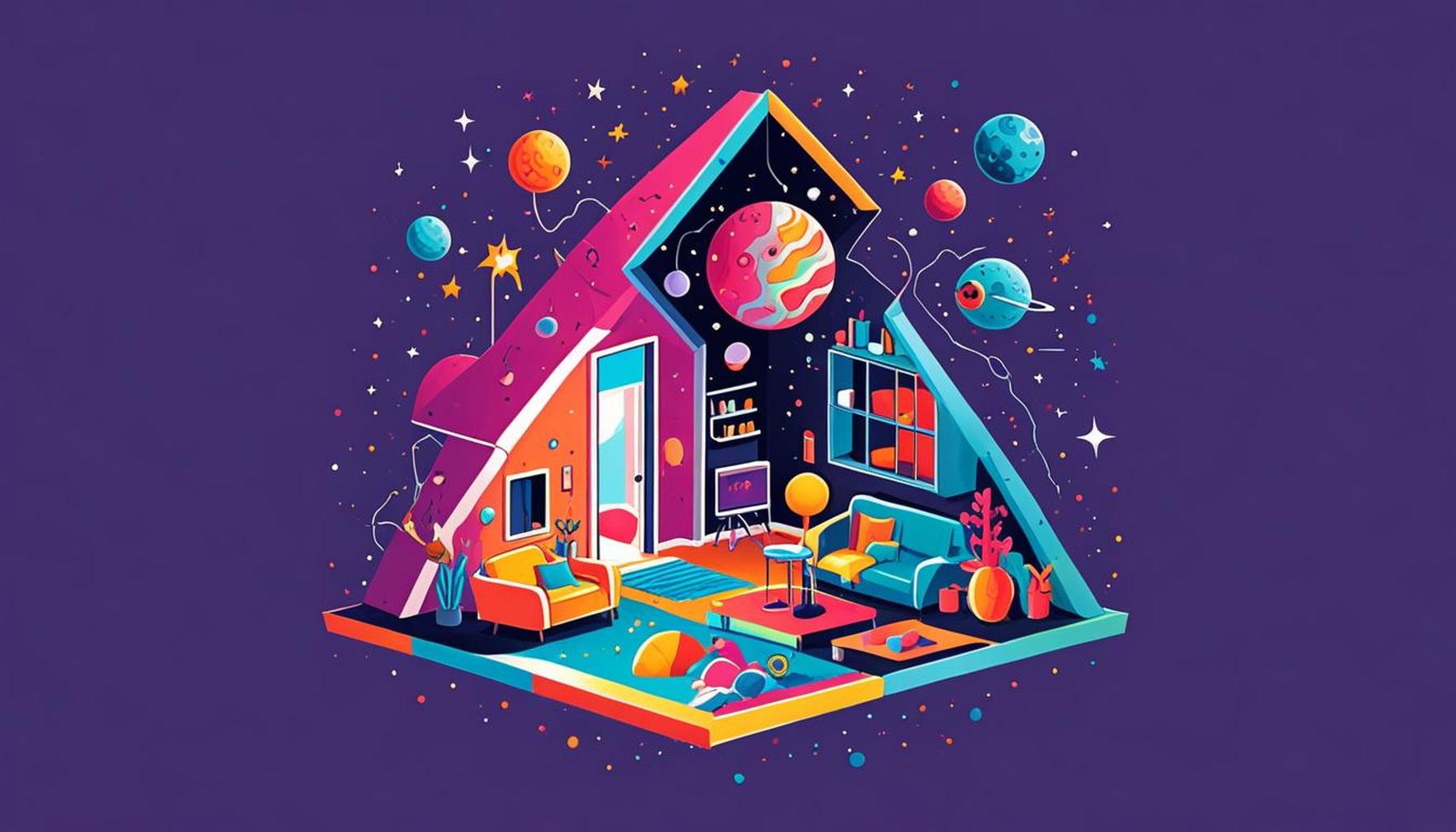The Impact of Minimalist Design on Space Utilization in Urban Living

Understanding the Essence of Minimalist Design
In an era where urban populations surge and living spaces contract, the necessity for optimizing space utilization has become critical. As metropolitan areas become densely populated, individuals are on the lookout for innovative ways to transform small areas into functional and stylish homes. In this context, the concept of minimalist design emerges as a beacon of simplicity and efficiency, advocating for a lifestyle that intentionally prioritizes the essential over the superfluous.
Minimalism is characterized by its hallmark traits: clean lines, open layouts, and a focus on functionality. It invites homeowners to strip down their environments to the core elements that genuinely serve a purpose or bring joy. Some key features of minimalist design include:
- Decluttered environments: The foundational principle of minimalism urges individuals to reduce their belongings to those that are truly necessary or hold significant personal value. This decluttering process not only alleviates visual chaos but also simplifies daily decision-making, allowing for a more peaceful living environment.
- Multi-functional furniture: In compact living arrangements, versatility often reigns supreme. Transformative pieces, such as sofa beds that convert a living area into a sleeping space, help maximize utility without sacrificing aesthetics. For instance, a coffee table that doubles as storage or a dining table that can expand for gatherings are perfect examples of empathetic design.
- Neutral color palettes: Utilizing soft, muted hues can enhance the perception of space and light. Shades of white, beige, or gray not only contribute to an airy feel but also serve as a tranquil backdrop that allows other artistic or personal accents to shine against them.
The prevalence of minimalist design aligns seamlessly with the increasing trend of urban living across the United States. Cities like New York, San Francisco, and Chicago have seen a rise in micro-apartments and compact studios, prompting a reassessment of how we approach our living environments. The influence of minimalism extends beyond mere aesthetics; it fundamentally impacts our lifestyle. Consider the following benefits:
- Emotional well-being: Environments devoid of clutter can significantly influence mental clarity and reduce stress levels. Research has shown that a tidy, streamlined space fosters a sense of calm and can enhance productivity.
- Cost efficiency: Embracing minimalism often leads to smaller, more manageable living spaces. This efficiency can translate to lower rent or mortgage payments and reduced utility costs, making urban living more financially viable.
- Environmental impact: A commitment to minimalism can also promote sustainability. With fewer possessions, consumers may buy less, which contributes to a lower carbon footprint. Additionally, many minimalists are drawn to choosing natural materials and eco-friendly products, further benefiting the environment.
As urban dwellers continue to explore the principles of minimalism, they are not just redesigning their physical spaces but also redefining their lifestyles and values. This ongoing movement toward simplicity underscores a larger cultural shift—one that embraces functionality, sustainability, and a renewed appreciation for meaningful experiences over material accumulation. In the following sections, we will delve deeper into how minimalist design shapes our living experiences, with a focus on its broader implications for future urban settings.
DISCOVER MORE: Click here to delve deeper
Redefining Urban Spaces with Minimalism
As cities become increasingly populated and housing costs soar, the approach to space utilization demands innovative problem-solving. Enter minimalist design, which reimagines urban living by emphasizing functionality, simplicity, and efficiency over excess. This design philosophy encourages homeowners to thoughtfully curate their living environments, leading to not just aesthetically pleasing spaces but also highly effective ones.
The advantages of integrating minimalist principles into urban dwellings extend far beyond mere decoration. Here, we explore key aspects of how minimalist design significantly influences space utilization:
- Efficiency in Layout: A critical component of minimalism is the idea of open-concept layouts that allow for fluid movement and interaction within spaces. This design choice not only maximizes the square footage of apartments but also fosters a sense of connection between different areas of the home. For example, a small loft may blend kitchen, dining, and living areas seamlessly, minimizing barriers and creating an expansive feel.
- Smart Storage Solutions: In the realm of urban living, where every inch counts, the use of smart storage designed into furnishings can drastically alter the dynamics of a space. Wardrobes with built-in organizers, ottomans with hidden compartments, and wall-mounted shelves all contribute to eliminating clutter while maintaining accessibility. These solutions free up valuable floor space, allowing for more fluid movement and creative use of the area.
- Targeted Lighting: Good lighting is essential in maximizing the perceived space in a home. The minimalist approach often utilizes natural light through large windows or skylights, coupled with strategically placed ambient lighting. Bright and well-lit spaces not only enhance the visual aesthetics but also create a comfortable environment, elevating the overall mood of the inhabitants.
- Outdoor-Indoor Integration: Utilizing outdoor balconies or terraces as extensions of living spaces is another smart tactic in urban settings. Minimalist design often promotes seamless transitions from indoors to outdoors, effectively expanding the functional area of a home. By incorporating plants and outdoor furniture, these areas can serve as vibrant social spaces, making them integral to urban living.
The principles of minimalist design are more than just interior choices; they reflect a lifestyle that values quality of life and thoughtful decisions about material possessions. As urban dwellers grasp the benefits of minimalism, they experience a profound transformation in how they engage with their environments. Not only does this lifestyle enhance spatial functionality, but it also cultivates a sense of harmony and balance amidst the chaos of city life.
This holistic approach to design encapsulates the essence of modern urban living and its myriad challenges. As we continue to explore the interplay between minimalist design and space utilization in future city developments, it becomes clear that this movement signifies more than mere trend—it is a comprehensive response to the demands of contemporary life.
The Impact of Minimalist Design on Space Utilization in Urban Living
Minimalist design has emerged as a pivotal trend in urban living, fundamentally altering the way we perceive and utilize space within our homes. In densely populated areas, where square footage can be at a premium, minimalist design provides innovative solutions that maximize every inch. This approach not only enhances aesthetic appeal but also promotes functionality and efficiency.
One of the most significant advantages of minimalist design is its focus on essentiality. By stripping away unnecessary clutter, urban dwellers can create open, airy environments that feel larger than they actually are. This concept encourages homeowners to prioritize quality over quantity, resulting in well-curated interiors that reflect personal style without overwhelming the senses.
Smart storage solutions are a hallmark of minimalist design, offering creative ways to organize belongings. Multi-functional furniture, such as ottomans with hidden storage or wall-mounted shelves, allows residents to minimize visible items while optimizing utility. These innovations align perfectly with the needs of urban lifestyles, providing both elegance and practicality.
Additionally, minimalism encourages a sustainable lifestyle through reduced consumption. By promoting thoughtful purchasing, individuals are less likely to accumulate items that contribute to clutter. This shift not only benefits personal spaces but also has a positive impact on the environment, lessening waste in urban settings.
Furthermore, the adoption of minimalist design can lead to more mindful living. With fewer distractions, individuals can focus on what truly matters—their relationships, experiences, and personal growth. This philosophy resonates deeply in urban environments where the rush of daily life can be overwhelming.
| Category | Characteristics |
|---|---|
| Maximization of Space | Minimalist design enhances the perception of space by eliminating clutter and focusing on essential elements. |
| Sustainable Living | By encouraging conscious consumption and reducing unnecessary items, minimalism promotes eco-friendly living in urban areas. |
Such benefits of minimalist design in urban settings not only foster new lifestyle paradigms but also challenge individuals to rethink their approach to space. As cities continue to evolve, the integration of minimalist principles into residential architecture and interior design will become increasingly relevant, offering sustainable and stylish solutions for modern living.
DISCOVER MORE: Click here for innovative storage solutions
Revolutionizing Urban Living with Minimalist Principles
In addition to enhancing visual appeal and creating functional spaces, minimalist design fosters an environment that encourages intentional living. This design philosophy enables urban residents to embrace a lifestyle that discards the unnecessary, leading to not only optimized space utilization but also a more enriching living experience. Below, we explore further aspects of how minimalist design impacts urban living:
- Multi-Functional Furniture: Minimalism champions the idea of versatility in furnishings. In urban areas where living spaces are often compact, furniture that serves multiple purposes can significantly enhance both utility and aesthetic appeal. For instance, a sofa that converts into a bed or a dining table that extends for larger gatherings embodies this principle. This type of furniture allows residents to adapt their spaces based on needs, maximizing the potential of smaller homes and making everyday life more convenient.
- Color Palettes and Textures: The colors and textures employed in minimalist design play a critical role in space perception. Light, neutral color schemes—such as whites, creams, and soft pastels—are prevalent as they reflect light and create an illusion of openness. Coupled with strategic material choices like glass, which visually expands space, minimalist interiors can feel airy and inviting, even in cramped urban settings. A well-executed color palette can drastically alter a homeowner’s experience of their living environment.
- Emphasis on Quality Over Quantity: Minimalist design encourages urban dwellers to prioritize quality items that serve a purpose. Instead of filling a space with an array of decorative items, minimalism advocates for a few well-chosen pieces that resonate with the resident’s lifestyle. This shift in mindset leads to a more sustainable approach to consumption, as individuals become more thoughtful in their purchases, ultimately decreasing waste and supporting local artisans and manufacturers.
- Smart Technology Integration: The rise of smart home technology complements minimalist design ideals by enhancing functionality without overwhelming the aesthetic of a space. Smart home systems allow for remote management of heating, lighting, and security—all while maintaining an uncluttered appearance. With intelligent appliances and systems that streamline daily living, urban residents can enjoy upgraded convenience without sacrificing space or style.
- Improved Mental Clarity: Beyond physical space utilization, embracing minimalism can positively affect mental well-being. An uncluttered environment promotes a sense of peace and focus that is vital in the fast pace of urban life. Research indicates that a simplified lifestyle can decrease stress levels and enhance overall happiness, reinforcing the idea that minimalist design is not solely about aesthetics, but about providing a foundation for improved mental health in densely populated areas.
As the challenges of urban living intensify, the principles of minimalist design offer innovative solutions that resonate on multiple levels. By effectively addressing spatial concerns and promoting a lifestyle rooted in simplicity and sustainability, this approach fundamentally shapes the way individuals interact with their environments. In a world where space is often at a premium, minimalism stands out as a transformative force that redefines what it means to live well in a metropolis.
DISCOVER MORE: Click here to transform your bedroom
Conclusion: Embracing the Minimalist Mindset in Urban Environments
The influence of minimalist design on space utilization in urban living is profound and multifaceted. As cities grow denser, the need for innovative solutions to maximize limited living spaces becomes increasingly critical. From the strategic use of multi-functional furniture to the incorporation of light, airy color palettes and textures, minimalism transforms cramped environments into haven-like retreats. This approach does not merely enhance aesthetics; it promotes a lifestyle focused on purpose and intention.
By emphasizing quality over quantity, urban residents can curate their spaces in ways that reflect their personal values and encourage sustainable consumption. Moreover, integrating smart technology within minimalist frameworks creates a seamless harmony between functionality and style, enhancing everyday living without adding clutter. Perhaps most importantly, the serenity that comes from a simplified environment contributes to improved mental clarity and overall well-being, illustrating that minimalism is more than just a design trend; it serves as a viable antidote to the stresses of urban life.
As we regard the future of urban habitation, adopting minimalist principles may not only be advantageous but necessary for fostering a more sustainable, peaceful living experience. It invites individuals to reconsider their relationship with their surroundings and to explore the transformative power of less. The potential for minimalist design to redefine urban living remains vast, beckoning residents to embark on a journey toward intentionality in both their spaces and their lives.



